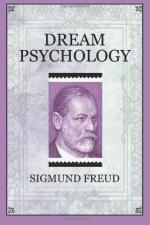one of its constituent elements. It is confronted,
however, by the censor, which is still active, and
to the influence of which it now succumbs. It
now takes on the distortion for which the way has
already been paved by its transference to the recent
material. Thus far it is in the way of becoming
something resembling an obsession, delusion, or the
like, i.e. a thought reinforced by a transference
and distorted in expression by the censor. But
its further progress is now checked through the dormant
state of the foreconscious; this system has apparently
protected itself against invasion by diminishing its
excitements. The dream process, therefore, takes
the regressive course, which has just been opened
by the peculiarity of the sleeping state, and thereby
follows the attraction exerted on it by the memory
groups, which themselves exist in part only as visual
energy not yet translated into terms of the later
systems. On its way to regression the dream takes
on the form of dramatization. The subject of compression
will be discussed later. The dream process has
now terminated the second part of its repeatedly impeded
course. The first part expended itself progressively
from the unconscious scenes or phantasies to the foreconscious,
while the second part gravitates from the advent of
the censor back to the perceptions. But when
the dream process becomes a content of perception
it has, so to speak, eluded the obstacle set up in
the Forec. by the censor and by the sleeping state.
It succeeds in drawing attention to itself and in
being noticed by consciousness. For consciousness,
which means to us a sensory organ for the reception
of psychic qualities, may receive stimuli from two
sources—first, from the periphery of the
entire apparatus, viz. from the perception system,
and, secondly, from the pleasure and pain stimuli,
which constitute the sole psychic quality produced
in the transformation of energy within the apparatus.
All other processes in the system, even those in the
foreconscious, are devoid of any psychic quality, and
are therefore not objects of consciousness inasmuch
as they do not furnish pleasure or pain for perception.
We shall have to assume that those liberations of
pleasure and pain automatically regulate the outlet
of the occupation processes. But in order to
make possible more delicate functions, it was later
found necessary to render the course of the presentations
more independent of the manifestations of pain.
To accomplish this the Forec. system needed some qualities
of its own which could attract consciousness, and
most probably received them through the connection
of the foreconscious processes with the memory system
of the signs of speech, which is not devoid of qualities.
Through the qualities of this system, consciousness,
which had hitherto been a sensory organ only for the
perceptions, now becomes also a sensory organ for a
part of our mental processes. Thus we have now,
as it were, two sensory surfaces, one directed to
perceptions and the other to the foreconscious mental
processes.




